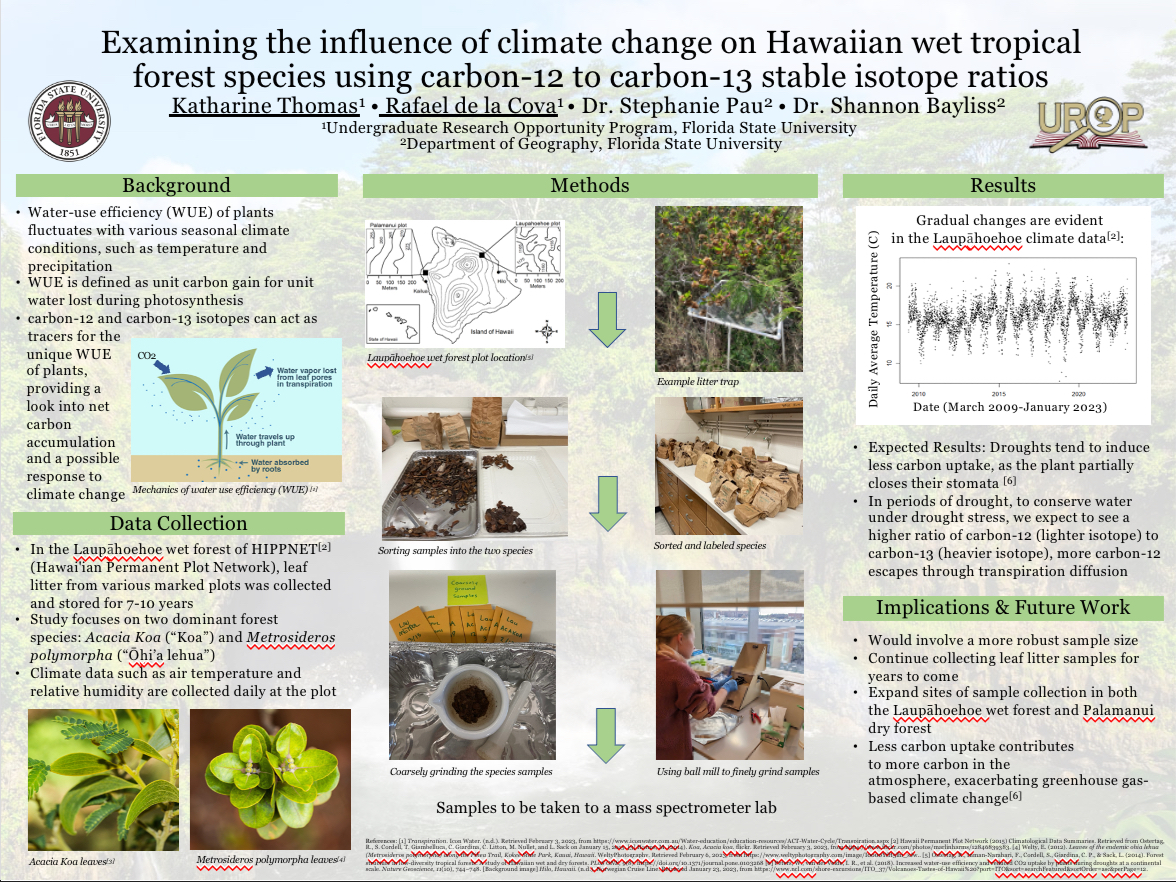Research Symposium
23rd annual Undergraduate Research Symposium, April 6, 2023
Rafael de la Cova Poster Session 3: 2:45 pm - 3:45 pm/ Poster #368

BIO
Hi everyone, I’m Rafael de la Cova from sunny Miramar in South Florida. I am currently a freshman pursuing a Bachelor’s degree in Meteorology. I am generally interested in most things weather and climate, especially Florida’s mesoscale and tropical weather (that I grew up around). In terms or research, I am just as interested in tropical plant conservation as well as the weather, so this current project really does lie at the crux of these fields and of my interests (weather and plants). In the future I plan to work as a forecaster for the government or private entity.
Examining the influence of climate change on Hawaiian wet tropical forest species using carbon-12 to carbon-13 stable isotope ratios
Authors: Rafael de la Cova, Stephanie PauStudent Major: Meteorology
Mentor: Stephanie Pau
Mentor's Department: Geography Mentor's College: Florida State University Co-Presenters: Katharine Thomas
Abstract
Climate change affects all aspects of the global environment including the amount of water available to plants in tropical forests, particularly those located in the dry and wet tropical forests of Hawai’i. Captured and examined over time, the stable carbon isotopes in plant litter, carbon-12 and carbon-13, can act as tracers for the unique water-use efficiency of plants in given climate conditions. Water-use efficiency of plants relates to entire ecosystem processes such as net carbon accumulation through photosynthesis. These observations may provide a clearer look into the response of tropical forests to climate change. From 7-10 years of leaf litter collections from the wet forest at Laupahoehoe, we sorted the species Acacia Koa (“Koa”) and Metrosideros polymorpha (“Ohi’a lehua”). After sorting by species, we ground the samples into a homogenous fine-grained powder and dried them to ensure all extra water weight was dissipated. A mass spectrometer was used to measure the carbon stable isotope concentrations. The records of these isotopic ratios allow us to track the plant's water-use efficiency over time and how water-use efficiency fluctuates with various climate conditions that the plants were experiencing seasonally, including temperature and precipitation. In time, we expect species to adapt to warmer and drier conditions and therefore have less C13 and higher water use efficiency because of decreased stomatal conductance plants exhibit when under water or temperature stress.]
Keywords: Carbon isotopes, plant phenology, tropical forests


